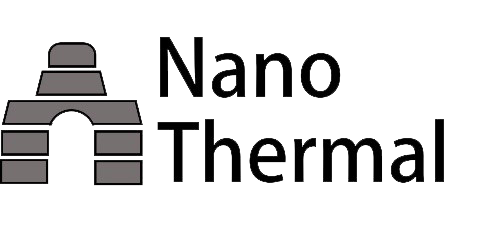Techniques
Thermal metrology in nanoscale systems is a challenging task. We are constantly striving to develop new techniques with improved resolution, accuracy, and sensitivity. Some of the techniques that we have developed to a high level are listed below.
Time Domain Thermoreflectance
This technique has become one of the most accepted standards for measurement of thermal properties of thin films. It is non-contact pump-probe technique, where an ultrafast (130 fs) pulse is used to heat the surface of a sample, and a probe beam and delay line are used to measure the surface temperature rise as a function of time. Due to the extremely high time resolution of this technique it is useful for studying hot electron effects, and electron-phonon coupling in thin films.
Frequency Domain thermoreflectance
This is a variation on the classical time domain technique. In this case the pump laser is modulated and the modulation frequency is swept from 100Hz to 50MHz. This creates a periodic heat source which results in an oscillating surface temperature. The amplitude and phase of this temperature oscillation can be picked up using a lock in amplifier by monitoring the reflected signal from a probe laser. Compared to TDTR this technique is simpler to implement as there are no moving parts. When combined with a scanning stage this can be used to create thermal diffusivity maps. FDTR is well suits to measuring thermal properties of buried layers or thermal interface conductance.
CCD based thermoreflectance
This is an imaging technique where a standard microscope can be modified to create images of surface temperature. The device under test (DUT) is subjected to a periodic source. The CCD camera is triggered to a multiple of the frequency of this source allowing us to pick up small changes in reflection of the surface. Compared to IR imaging this technique can achieve much higher spatial resolutions (~300nm).
3ω technique
This is an electrical technique which we use to calibrate the optical techniques. It can be used to measure the thermal conductivity of thin non electrically conducting films. We use this in conjunction with a closed loop helium cryostat to measure the temperature dependence of thermal conductivity.
Bulk electrical and thermal measurement Rig.
We have developed our own 4 point probe electrical measurement system and thermal conductivity measurement system for bulk samples. In this rig we can measure both in-plane and cross-plane electrical and thermal conductivity.
Ceramic Additive manufacturing
We have developed recipies and processes for manufacture of 3D components using additive manufacturing in materials including Alumina, Silicon Nitride, and Zirconia. These materials have usefull thermal, mechanical and electrical properties.
Angle Resolved Reflectometry.
We have developed an experimental setup which can measure the angle dependent reflection spectra of samples as a function of temperature. These are important for characterisation of thermoreflectance coefficients, but can also be used for characterising performance of a range of optical devices.
Nanofabrication and Characterisation
In addition to these specialised techniques we also have access to a broad range of advanced equipment through the School of Physics and research centres such CRANN, AMBER and CONNECT. These include deposition techniques such as magnetron sputtering, PVD, CVD, PLD, lithography techniques such as UV and electron beam lithography, and chracterisation such as XRD, XPS and Ellipsometry.



